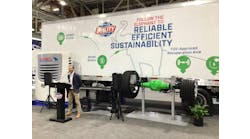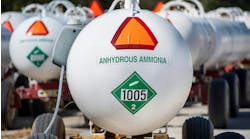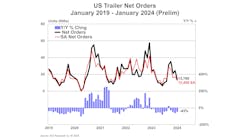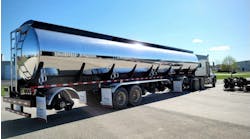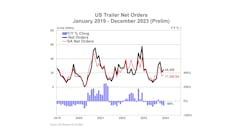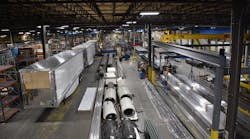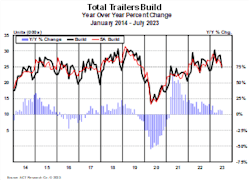The U.S. trailer forecast for 2023 increased during the past three months, according to this quarter’s update of ACT Research’s Trailer Components & Raw Materials Forecast.
The 2024 trailer production forecast also now is higher, reflecting higher build in 2023 and 2024, with the economy continuing to outperform expectations, higher GDP and freight forecasts, and more normalized supply chains, according to the report.
Specifically, build in the last three months (May-July) of 81,700 units was 7% higher than the same three-month period last year, while net orders of 26,300 trailers were about 58% lower for the May-to-July-2023 period, versus the same three months in 2022, the market analyst reported. said Jennifer McNealy, director-CV market research and publications at ACT Research. Similarly, order backlogs at 157,300 units were 15% lower than the 184,900 units pending production last year.
“As part of our recent trailer-maker survey, we asked about 2024 orderbook openings and dealer inventory levels,” McNealy explained. “Based on their responses, it appears that about 35% of the industry’s Q1’24 books have opened, with limited slots available beyond that. Regarding dealer inventories, answers were product dependent, with generalist trailer levels higher than specialty trailer inventory levels.”
ACT Research’s U.S. New Trailer Components & Materials Forecast provides those in the trailer production supply chain, as well as those who invest in said suppliers and commodities, with forecast quantities of components and raw materials required to support the trailer forecast for the coming five years. It includes near-term quarterly predictions for two years, while the latter three years of the forecast are shown in annual details. Additionally, analysis is segmented into two categories: those needed for the structural composition of new trailers and those used in the production of undercarriage assembly.

